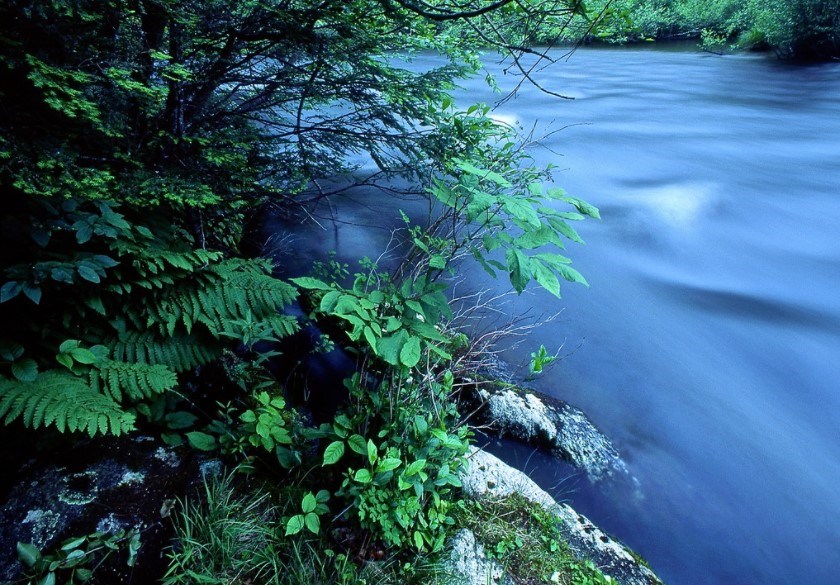Last updated: August 31, 2020
Article
Water Quality | A Look at the Farmington River’s Water
Wild and Scenic Rivers, like all rivers, are protected under the Clean Water Act, which requires states to establish water quality standards for waters within their jurisdiction. Every two years, states are required to report whether these standards are being met. In 2018, NPS compiled information from the most recent state assessments to identify the water quality status of all designated Wild and Scenic Rivers. Based on the information available at the time, NPS determined that roughly 44% of all Wild and Scenic River miles in the entire WSR system [under the National Park Service (NPS), U.S. Forest Service (USFS), Bureau of Land Management (BLM), and U.S. Fish and Wildlife Service (FWS)] did not meet their water quality standards, with temperature, mercury, and metals being the most common causes of impairment. Of the Wild and Scenic Rivers under NPS partnerships (including those in NPS park units, Partnership WSRs, and 2aii WSRs), 57% did not meet their water quality standards. Partnership Wild and Scenic Rivers have a long history of working to improve the water quality of these rivers.
Water Quality Status of the Farmington River
|
Wild and Scenic River |
Reporting |
Miles by Water Quality Classification |
Listed Impairments |
||
|
Good |
Impaired |
Unassessed |
|||
|
West Branch Farmington |
2016 |
13.7 |
0 |
0 |
None |
The Farmington River was a Partnership Wild and Scenic River that was not identified as impaired in the report based on data from 2016!
Local residents may be concerned about E. coli contamination that may impact recreational activities. The Connecticut DEEP conducts infrequent monitoring of bacteria in the Farmington River, and the Farmington Valley Health District frequently conducts water sampling along the River with a map of results available online.

The Farmington Wild and Scenic River is listed as having no impairments, meaning it currently meets all water quality standards and requirements set by the state or local governing authority. Partnership Wild and Scenic Rivers typically have a management council comprised of local community members, non-profits, and relevant government agencies who together help manage the treasured river resources. In many cases, like the Farmington, there are local watershed groups with which to partner on water quality monitoring (WQM).
The Farmington River Watershed Association (FRWA) is the local watershed organization that works with the Farmington River Coordinating Committee (FRCC) to advocate for good watershed policy at federal, state and local levels – as well as conduct WQM on the Wild and Scenic designated portions of the Upper Farmington River.
Covering the entire Farmington River watershed, FRWA has made great strides in monitoring water quality, as well as providing educational resources for users to do their part in protecting the river from pollution such as: plastics and chemical runoff; stormwater challenges; climate change and development impacts and invasions of non-native species. The FRWA launched the Water Quality Monitoring Program in 2004. For the past sixteen years, the program has assessed the health of the river by establishing a baseline of water quality information, identifying long and short-term changes in water quality and land use, educating residents of the watershed and involving partners in monitoring efforts. The Farmington River Coordinating Committee (FRCC) provides support for their work on the Upper Farmington River.
The FRCC’s River Steward program has clocked hundreds of hours with both a hired staff and volunteers to help make the river safer, cleaner, and healthier. The River Steward team acts as Wild and Scenic River ambassadors, working on engaging the public in organized river cleanups, events, and educational opportunities on topics including carry in and carry out, Junior River Ranger activities, and eradicating invasive species. More on the Stewards may be found highlighted in the recreation section of this newsletter.
Through continued oversight and support from groups such as the FWRA, FRCC and Farmington River Stewards, we all can continue to do our part and keep the Farmington River healthy, beautiful and open to recreational activities for the enjoyment of generations to come.
Check out the PWSR pages on the rivers.gov website to find out what each rivers is doing to protect and enhance water quality.
Want to learn more about Wild and Scenic River water quality? Read the full 2018 water quality report found on the rivers.gov website.
The Interagency Wild and Scenic River Coordinating Council created this Story Map, found on the nps.gov website, that provides more information about the water quality of Wild and Scenic Rivers and their top impairments.
Return to Partnership Wild and Scenic River News | August 2020
